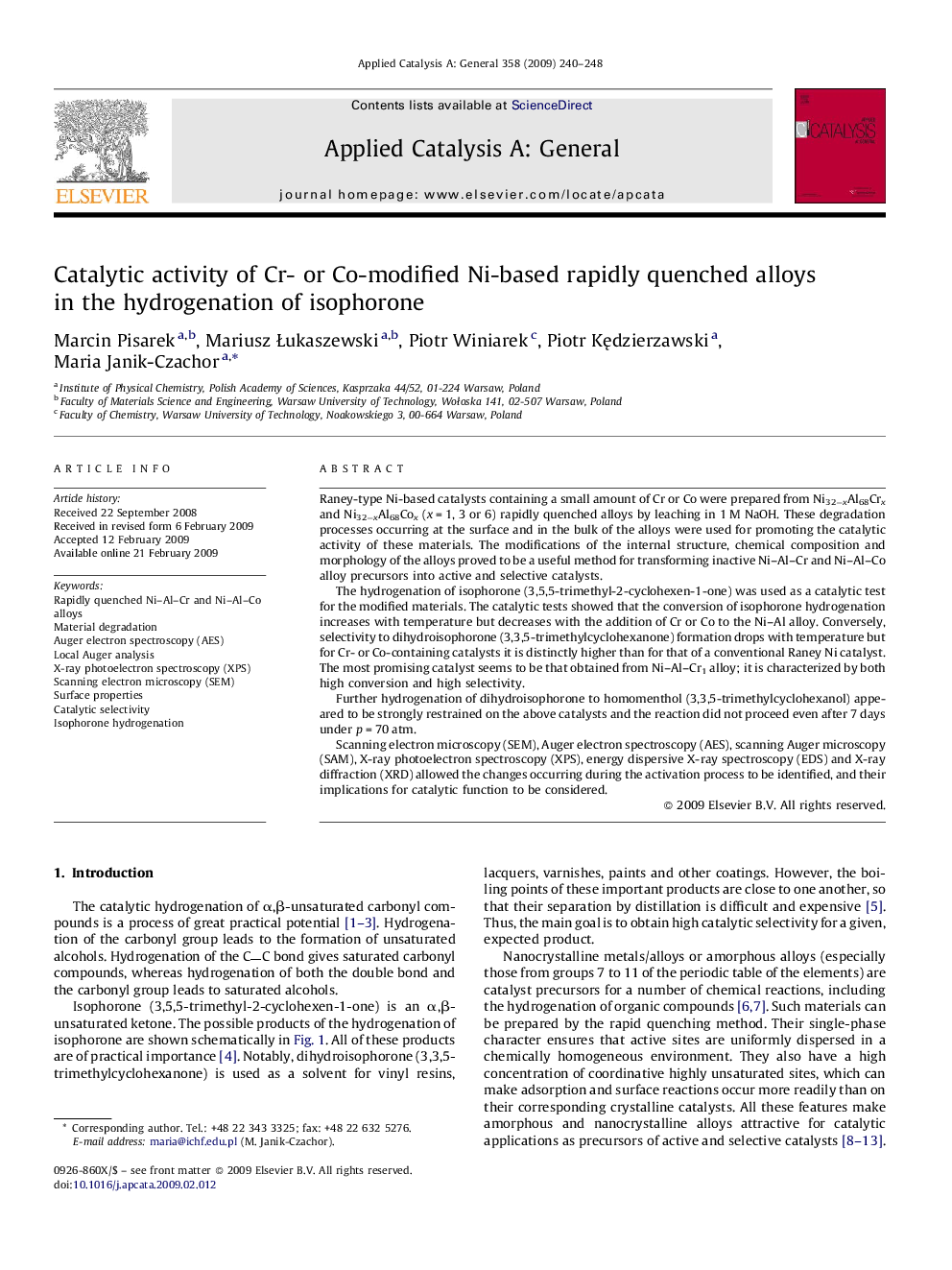| Article ID | Journal | Published Year | Pages | File Type |
|---|---|---|---|---|
| 43139 | Applied Catalysis A: General | 2009 | 9 Pages |
Raney-type Ni-based catalysts containing a small amount of Cr or Co were prepared from Ni32−xAl68Crx and Ni32−xAl68Cox (x = 1, 3 or 6) rapidly quenched alloys by leaching in 1 M NaOH. These degradation processes occurring at the surface and in the bulk of the alloys were used for promoting the catalytic activity of these materials. The modifications of the internal structure, chemical composition and morphology of the alloys proved to be a useful method for transforming inactive Ni–Al–Cr and Ni–Al–Co alloy precursors into active and selective catalysts.The hydrogenation of isophorone (3,5,5-trimethyl-2-cyclohexen-1-one) was used as a catalytic test for the modified materials. The catalytic tests showed that the conversion of isophorone hydrogenation increases with temperature but decreases with the addition of Cr or Co to the Ni–Al alloy. Conversely, selectivity to dihydroisophorone (3,3,5-trimethylcyclohexanone) formation drops with temperature but for Cr- or Co-containing catalysts it is distinctly higher than for that of a conventional Raney Ni catalyst. The most promising catalyst seems to be that obtained from Ni–Al–Cr1 alloy; it is characterized by both high conversion and high selectivity.Further hydrogenation of dihydroisophorone to homomenthol (3,3,5-trimethylcyclohexanol) appeared to be strongly restrained on the above catalysts and the reaction did not proceed even after 7 days under p = 70 atm.Scanning electron microscopy (SEM), Auger electron spectroscopy (AES), scanning Auger microscopy (SAM), X-ray photoelectron spectroscopy (XPS), energy dispersive X-ray spectroscopy (EDS) and X-ray diffraction (XRD) allowed the changes occurring during the activation process to be identified, and their implications for catalytic function to be considered.
Graphical abstractThe hydrogenation of isophorone (3,5,5-trimethyl-2-cyclohexen-1-one) was studied on Ni–Al Raney-type catalysts modified with Cr or Co. High selectivity (almost 100% after 2 h at 20 °C and p = 1 atm and above 70% at 80 °C) to racemic dihydroisophorone (3,3,5-trimethylcyclohexanone) was obtained. SEM, AES, XPS, EDS and XRD techniques were applied for the catalyst characterization. Effect of temperature on the selectivity to dihydroisophorone for Al–Ni–Cr and Al–Ni–Co catalysts. Data for Raney Ni are also given for comparison.Figure optionsDownload full-size imageDownload as PowerPoint slide
